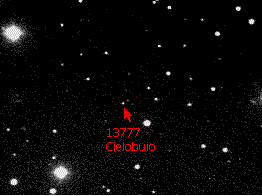(Prismatic vs. curved vs. flat glass fixtures) Here ìll demonstrate that the traditional way to show how much pollutant is a fixture is not completely correct. It simplifies too much the real world. In fact, normally is assumed all the upward light to be equivalent in lighting our skies. So, if a luminarie has a flux divided in 3% direct above the horizon and 97% to the ground, assuming a 10% reflectance of the ground, the total flux to the sky is 12.7% of that emitted by the fixture. A full cut-off fixture has only the flux diffused by the ground, i.e. 10%. It seems that there is not so much difference.
But what makes the sky bright is the light diffused by the atmosphere. Here wéll assume the light diffused proportional to the light absorbed. In a typical clear night at sea level the extinction coefficient is about 0.3 mag/atmosphere, i.e. a star at the zenith loses 0.3 magnitudes while a star at 30° above the horizon loses 0.6 magnitudes because its light must go through twice the air. In other words a flux loses 24% of its total every atmosphere crossed. A light beam aimed 25° above the horizon diffuses in the atmosphere twice the amount of the same beam directed to the zenith. This is half the story.
The other factor that we must take into account is that the ground is nearly a lambertian diffuser, i.e, like a white paper, it maintains the same brightness as we change our seeing angle from directly above it to almost sideways. The real world is a bit more complicated, but to our purposes, this is a good approximation. This means that if we see a square parking lot at various angles we receive lesser and lesser light passing from above it to sideways because the solid angle under which we perceive it tends to zero as we approach the horizon (we see slimmer and slimmer rectangles until we see only a segment).
Given the above and assuming that the upward fluxes of luminaries like the prismatic and curved glass emit only in the 0° to 20° above the horizon, I compare the polluting power of three different luminaries. Of the 10% diffused by the ground about 1/3 (3.2% of the flux emitted by the fixture) is absorbed by the atmosphere and contributes to light the sky. On the other hand 80% of the direct flux emitted form 0° to 20° is absorbed. This means that for a prismatic fixtures the seemingly negligible 3% direct flux is almost as pollutant as the 10% diffused by the ground (80% of 3% is 2.4% vs 3.2% from the ground). For a curved glass emitting only 0.3% of the flux directly above the horizon we have that it is 0.3%*80%/3.2%=7.5% as pollutant as the flux diffused by the ground, a non negligible fraction. A full cut off fixtures is consequently the only one that allows to limit to the minimum light pollution
Calculating the fractions that go upward is not the whole story, we need to take into account the emission direction of the direct and indirect fluxes. Results are summarised in the following table.
% of fluxes : Full cut-off (FCO)
Diffused by the ground 10%
Direct upward 0%
Total upward flux 10%
Polluting power 1
% of fluxes : Curved glass
Diffused by the ground 10%
Direct upward 0.3%
Total upward flux 10.3%
Polluting power 7.5% more than FCO
% of fluxes : Prismatic glass
Diffused by the ground 9.7%
Direct upward 3%
Total upward flux 12.7%
Polluting power 75% more than FCO





